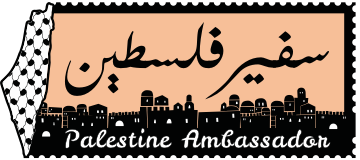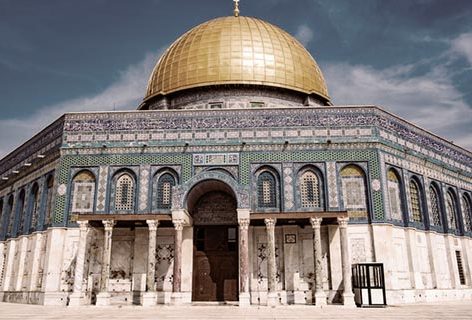Lesson one:
The red stone:
Jerusalem…Jerusalem holds significant value in Arabian history and also worldwide religiously from the Islamic and Christian perspectives. However, Ahmad Al-Damen, director and music composer of this documentary, uses the film treatment to shed another light on Jerusalem as a vital space of the collective memories of people who were born in thehomes of Jerusalem before Israel confiscated and ethnically cleansed them by replacing Jerusalemites with settlers.
In 1948, Israel occupied 85% of Jerusalem and expelled over 100 thousand Palestinians from their homes in Jerusalem and its vicinity. It further confiscated their assets and passed them along as Israeli heritage. Moreover, the delibrate forgery of chronological dating of the homes it confiscated.
In this documentary the director narrates the stories of several Jerusalemite families who have been carefully chosen to cover all the various aspects of the Palestinian cause. It depicts Jerusalem before and after 1948, an image portraying the memories of the film guests to unveil the truth about that period of time.
Mr. Munir Fasheh, Phd., a professor in education depicts a comprehensive image of his family and the home he was born into, while Engineer Hani Ibrahim Haqqi puts us in chronological context of the home he was born and raised into in Jerusalem. On the other hand, professor Gabi Baramki Phd. combines both his personal narrative and his family’s with the narrative of the home which his late father used to go to watch silently in pain without the ability to ever walk into it again.
The director then takes us to the front door of a house that witnessed the story of two families; one which built it, lived in it, and then forcefully expelled from it, while the other consifcated it, settled into it, and prohibited the orignial owners from ever setting foot into it even after 50 years from the date of expulsion
The narrative the documentary of the ‘red stone’ presents retells the story of the Palestinian Nakba (Catastrophie) from another angle in terms of the film treatment and film structure. It is a live testimony about the children who now became men yet their hearts still long for the homes they were born into, these homes represent their stolen memories and homeland. Up until this day they continue to try to visit their homes yet in may cases they are prevented and turned away by the Israeli families who confiscated them.
An aerial view of the city of Jerusalem shows that it has expanded along its southern side by 1881 around the time the Ottoman empire establisjed the railway connecting the cities of Jerusalem and Jaffa, Hence became what is known now as eastern and western Jerusalem. Prior to the Nakba around the time Israel started the ethnic cleansing of the city and its suberbs, Israel denounced residency rights to any Jerusalemite who left his home therefore subjecting his/her property to the zionist law known as ‘Absentees’ property law’ which entitles Israel to take possession of an absentee’s property even if the person returns to claim it!
Upon watching the documentary you will get familiar with:
- The architectural style of the Jerusalem homes.
- An aspect of the social life in Jerusalem prior to the Nakba.
- A group of personal narratives about families whose children were born in Jerusalem however, due to the colonization they have lost their right to access their property.
- The zionist policies to colonize Jerusalem and the replacement of Arab Palestinian families with zionist families.
- The laws imposed by Israel to legalize the colonization of Jerusalem.
Key highlights:
- The ethnic cleansing which Jerusalemite families endured was based on preserving the beautiful well kept homes from demolishment after the firceful expulsion of its residents in order to replace them with settlers.
- The properties of Jerusalemite families who have been subjected to forceful expulsion was deemed as “absentees’ properties” by the Israeli system. Yet this does not give the Israeli government the right to sell the properties however it entitles it to transfer it to the development authority which in turn sells them or transfers them to housing properties for settlers.
- Israel has continued to impose the “Absentees’ properties law” to wrongfully seize the homes and properties of Jerusalemites in breech of the International Law all while maintaing the term “Absentees’ properties”.
- During and after the Nakba Israel has totally judiazed western jerusalem, in other words it has exercised forceful expulsion against Palestinian Arab residents out of all western Jerusalem neighborhoods during it military operations.
- The city of Jerusalem expanded to the west coinciding with the establishment of the railway connecting the cities of Jersalem and Jaffa in 1881 during the ottoman empire era.
- According to the policy undertaken by the British Mandate towards Palestinians, the British Military Authorities prohibited Palestinian Arabs from carrying or possessing firearms in Jerusalem as well as other cities on the other hand they have looked the other way towards arming zionists and in certain cases supported arming them.


